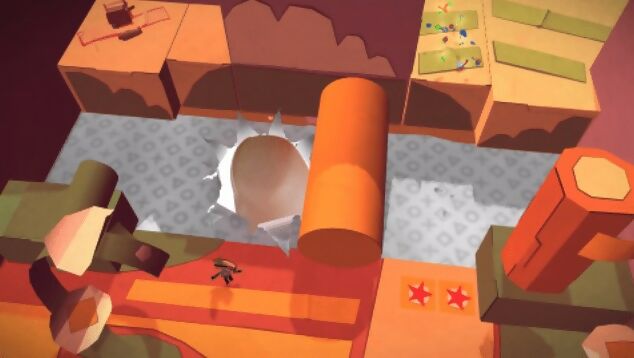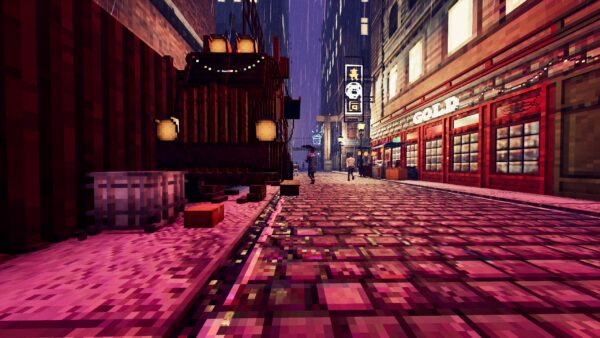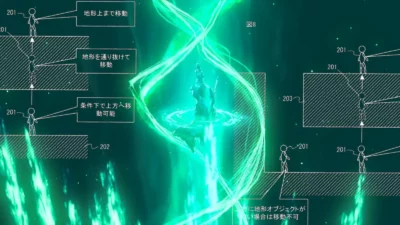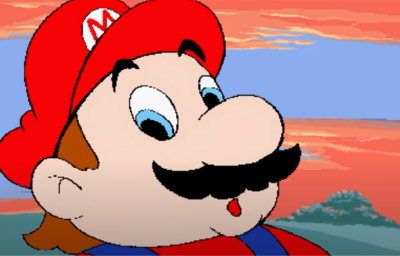
Your fingers are powerful enough tools on any handheld console, but none more so than Sony’s ill-fated PSP successor. With its dual analogue sticks, gyroscopic motion controls, and appropriately “clackety” shoulder buttons, the Vita represented a significant technical step up from what Sony had tried before. It was a clear attempt to create the Rolls Royce of portable gaming devices. That said, while having multiple input methods seemed like a great way to offer players more ways to impact the in-game worlds they’d explore, it could be argued that packing in almost too many bells and whistles ultimately contributed to the PS Vita’s downfall, too. Developers simply didn’t know how to incorporate everything naturally – especially the Vita’s rear touchpad functionality. That is, until Tearaway arrived well over a year after launch.
Up until this point, the act of stroking or tapping the back of PlayStation’s second-generation handheld was seen as nothing more than a gimmick; an unnecessary addition that never elevated what it meant to play blockbuster games on the go. Wipeout 2048 saw you use it to up the acceleration of your anti-grav vehicle, while the console’s flagship launch title, Uncharted: Golden Abyss, merely offered it as a more convenient way to have Drake climb ropes or chains.
Such integrations of the rear touchpad were perfectly fine in practice, sure, yet all failed to fully capitalise on the tech’s unique gameplay possibilities. In most Vita games, almost any function given to the touchpad could just as easily be handled by a simple button press elsewhere.

Leave it to the ingenious creatives over at Media Molecule, then, to use this quirky feature’s strengths near-perfectly. By creating a world entirely made out of paper, Tearaway saw you play a more active part in the story. Using the back touchpad to aid Iota or Atoi on their journey to deliver a message felt genuinely engrossing, thanks to the ability of having your fingers burst up through the handcrafted world from underneath. It meant you were no longer viewing the world just as a passing observer, as in most Vita titles, but instead influencing puzzles, enemy encounters, and collectable hunts directly. The best part? This cool finger-pushing mechanic meant that Tearaway couldn’t be experienced this way on any other device. It felt like the Vita had finally arrived.
It helps that the bulk of Tearaway plays like an interactive storybook anyway. As well as being a clear homage to the days when 3D platforming adventures once ruled, you’re always swiping the front touchscreen to open up new passageways, drumming on the rear touchpad in a specific beat to alter surroundings, and tracing your own papercraft shapes and designs to see them implemented in-world. Rarely does a game let you interact with its goings-on as tangibly as this. Using your finger to spin a dial needed to let your messenger cross a bridge, or prop a platform up so they can reach a high point is the icing on top of this finely layered cake, and it’s consistently engaging.

If Tearaway falters slightly, it’s in its over-reliance on combat. At several points during the five-or-so hour journey, ball-like scraps will appear from nowhere to bombard Iota or Atoi, preventing them from delivering their important message. Unlike most other cutesy platformers, though, you’re not limited to basic punches, kicks, and dodge rolls. Rather, the best way to deal with them is to tear through the floor beneath enemies using a finger or two, tripping them up or sending the scraps skyward, where they flatten against the Vita screen. Tearaway probably could have worked fine without adding baddies to fight, but their inclusion served as another showcase for the rear touchpad – and conclusively proved that the finger is mightier than the sword.
That Tearaway wasn’t a Vita launch title back in 2012 is a cardinal sin. It’s a classic case of a game being designed around the tools available, instead of the other way around, as most developers up until that point had been doing. By releasing it so late, day-one purchasers were robbed of one of the Vita’s finest touchy-feely experiences.
Ultimately, as it stands, watching your fingers burst through the game world is a killer feature that remains exclusive to Tearaway on Vita – the very epitome of hardware and software working together harmoniously to offer an interactive experience rarely found elsewhere.
The game’s a celebration of the handheld console’s novelties and peculiarities that always should have been there. By expertly weaving the rear touchpad’s untapped potential into the experience, players were literally able to go hands-on with an already handcrafted adventure.
Good on paper
PlayStation Vita selling so poorly eventually meant that Media Molecule ported an expanded, slightly altered version of its papercraft hit to PS4 in the form of Tearaway Unfolded. The console’s DualShock 4 doesn’t come equipped with a back touchpad like the Vita however, which forced the studio into several creative workarounds using the controller’s other advantages. Don’t worry, you still manipulate the world in a god-like fashion, only this time by shining down a beam using the DualShock’s light bar, and aiding your messenger in battle by sucking up scrap enemies into your gamepad before satisfyingly shooting them back out again. Despite the stark change in control setup, Media Molecule still found ways to provide a uniquely tactile experience in Unfolded. Your fingertips were still useful, even if they couldn’t be seen.





